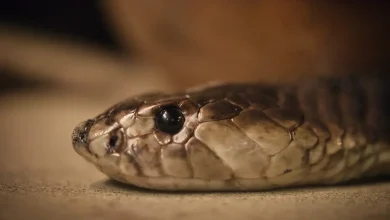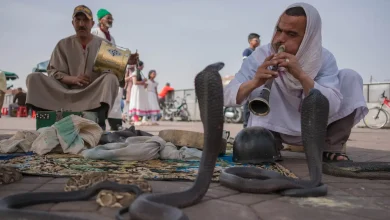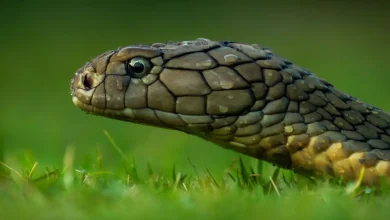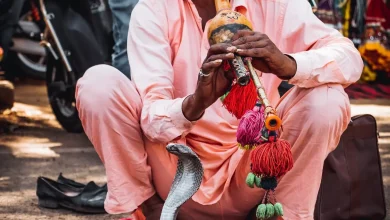Thailand Snake Journal – 3 Deadly Kraits
As I mentioned in the snake journal post previous to this one I got a call to come and see some deadly kraits at my friend’s place. I just returned from there and he had several snakes that I shot video of including the Ridley’s Racer, Mangrove Snake, Red-Tailed Racer, and the Yellow Banded Kraits.
Apparently, he knows a guy in another Thailand province who can get snakes regularly. Probably the guy catches them for people who call to have dangerous snakes taken away from their homes. Here in Krabi, we don’t have many of the ngoo sam leeum (Bungaris fasciatus), Banded Kraits for some reason. I’ve yet to see this yellow-black snake dead on the road in three years – so that tells me they are rather rare. One of my friends works at a snake show and he also goes out to villagers homes when they call to have a snake removed. He said he had never seen the yellow-black banded krait before. He has been in Krabi for three years.
The banded krait is not nearly as deadly as its sister, the Malayan Krait – the black-and-white variety. It’s damn toxic, but you probably are not going to die from a bite from this snake as long as you are treated at a hospital quickly when your breathing stops, which it almost inevitably does.
There is little pain at the bite site with toxic krait bites that result in envenomation. The venom starts working on the nerves of the muscles first. If you’re interested in exactly how someone dies from a bite from a krait you should get the book, “The Snake Charmer”. Joe Slowinski details the effects of a bite he took from many banded kraits in Burma while on a helping field trip (expedition). The many banded kraits was a 10″ baby that bit him for about 10 seconds one witness stated. That’s a long bite. The venom of that krait was ranked third in toxicity for all terrestrial snakes in the world. The inland taipan and the brown snake of Australia were first and second in strength of venom.
So I was able to touch the tail and back of the banded kraits today. The kraits have a triangle cross-sectional shape to their bodies. Hence the reason Thais call them lee-um – which means triangle in Thai. These banded kraits have the most pronounced triangle shape to them, versus the Malayan Blue Krait (black – white kraits) or the Red-Headed Krait.
Bungaris fasciatus are rather shy during the daylight hours, and not at their peak form. I was in the cage with 3 of them and walked toward them and they shuddered. I think you’ll see it in the video. They shake strongly – perhaps to tell you they are there – and warn you not to step on them. When their eyes were uncovered they did it in response to me raising my hands above them. Then, when both heads were buried under their bodies they did it when I walked close on the gravel next to them. The floor of the cage is concrete and transfers the vibration well.
My friend picked up the kraits a couple of times and though one of them appeared aggravated, and I thought it would bite him, it did not try. They do tend to jerk in a spasm though – even when held by the tail and dangling – probably to show their discomfort at being handled.
I’d love to get some close-up video of the inside of the krait mouth and rear fangs if possible. It will probably take a while before he’s comfortable to do that. These snakes are very powerful. When they move you can tell – they are strong and have lots of energy when they want to. They are primarily snake eaters and eat venomous as well as non-venomous snakes.
The maximum size yellow banded kraits get here in Thailand is about 1.6 meters. All three of the specimens I saw today were just less than that in size, and yet still very impressive.
If you are in southern Thailand and you’ve never seen a banded krait close-up and personal before maybe I can get you a private audience with one. Send me an email. If too many people write, I won’t be able to help anyone, but if only 1-2 of you, then yes, that’s doable.





Hi… found what appears to be a banded krait hatchling this morning in Bhutan. Can you help identify? Advise on feeding? Thanks! Jamie
I wrote you back email. Looks like a Laotian Wolf Snake, but not sure you have them in Bhutan. Also looks a bit like a Boiga dendrophila.